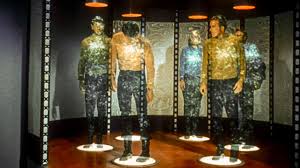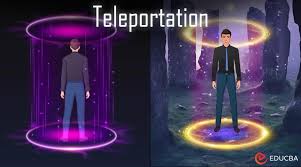
Teleportation is Real… Kind Of. Here’s the Science
We’ve all seen it in sci-fi: characters vanishing in one place and reappearing in another with a flicker of light and a sci-fi sound effect. But here’s the mind-bending truth—teleportation is real. Kind of.
No, we’re not beaming people to Mars just yet. But scientists have already teleported particles across space, using a technology that sounds like magic but is very much grounded in quantum physics.
Here’s what you need to know about this jaw-dropping scientific breakthrough—and how it might change the future.
⚛️ What Is Quantum Teleportation?
Teleportation in the quantum world doesn’t involve physically moving an object from point A to point B. Instead, it transfers information about a particle’s quantum state—think of it like copying the exact identity of a particle and recreating it somewhere else.
This process uses a phenomenon called quantum entanglement—when two particles become so deeply connected that changing one affects the other instantly, no matter how far apart they are.
So, teleportation here means:
-
Destroying the original quantum state
-
Reconstructing it perfectly elsewhere
-
Without physically moving the original particle
It’s like emailing your consciousness to a clone—only for subatomic particles. Wild, right?
🧪 How It Actually Works
Quantum teleportation involves three key steps:
-
Entangle two particles—one with the sender, and one with the receiver.
-
Perform a measurement on the sender’s particle and the unknown state to be teleported.
-
Send that measurement (via classical means) to the receiver, who then applies the same transformation to their particle—recreating the original quantum state.
While information is transferred, no material travels through space—just data. Yet the result is indistinguishable from true teleportation.
🚀 Real-World Milestones
This isn’t theory anymore—it’s already happening.
-
In 2017, Chinese scientists teleported photons from Earth to a satellite over 300 miles away using a quantum satellite called Micius.
-
Researchers in the Netherlands and the U.S. have teleported quantum states across fiber optic networks, laying the groundwork for future quantum internet.
-
In 2020, scientists at Fermilab and Caltech achieved 90% teleportation fidelity across 44 kilometers of fiber—an enormous leap in real-world conditions.
🌐 Why It Matters
🔐 Ultra-Secure Communication
Quantum teleportation could enable unhackable internet through quantum encryption. Because observing a quantum state changes it, any tampering is immediately detectable.
🖥️ Quantum Computing Networks
Just as classical computers are networked together, future quantum computers will need quantum links. Teleportation could be the backbone of this quantum internet.
📡 Deep Space Communication
Traditional signals can take minutes or hours to reach distant planets. Quantum teleportation could enable instantaneous data transfer—one day even between Earth and Mars.
🧍 So, Can We Teleport Humans?
Not even close. Here’s why:
-
A single human contains ~7 octillion atoms.
-
To teleport a person, you’d need to:
-
Measure every single atom’s position, spin, and energy state.
-
Transmit that vast amount of data (far more than all the internet traffic in history).
-
Rebuild the body atom-by-atom with perfect accuracy.
-
Worse still, quantum rules say the original would be destroyed in the process.
It’s not just a technical problem—it’s a philosophical one: Would the reassembled “you” still be… you?
So for now, Star Trek-style human teleportation remains in the realm of fiction.
🧠 Final Thought
Teleportation is no longer just a fantasy—it’s a reality in the quantum realm. While we’re still far from teleporting people, we’ve already taken giant leaps toward revolutionizing communication, computing, and encryption.
Teleportation is real… just not the way Hollywood imagined.
Yet.
